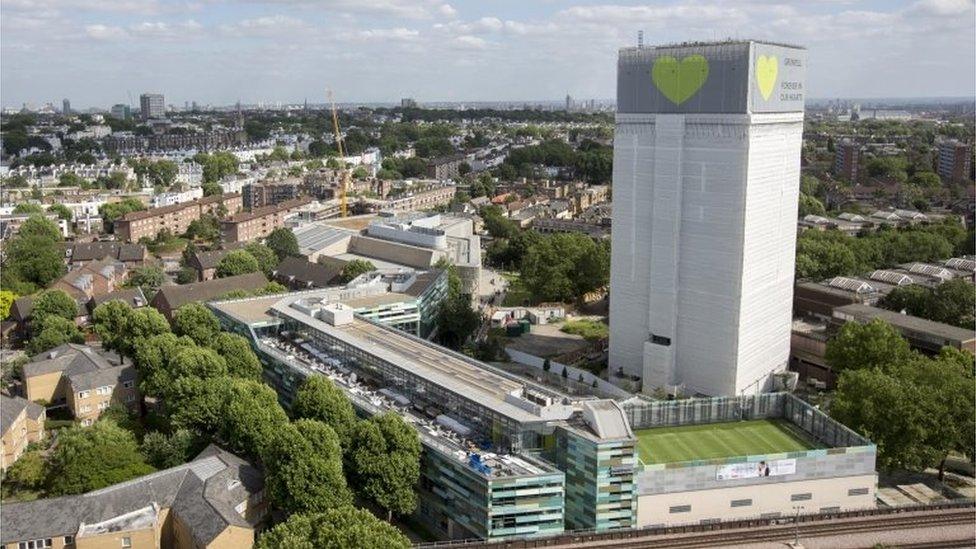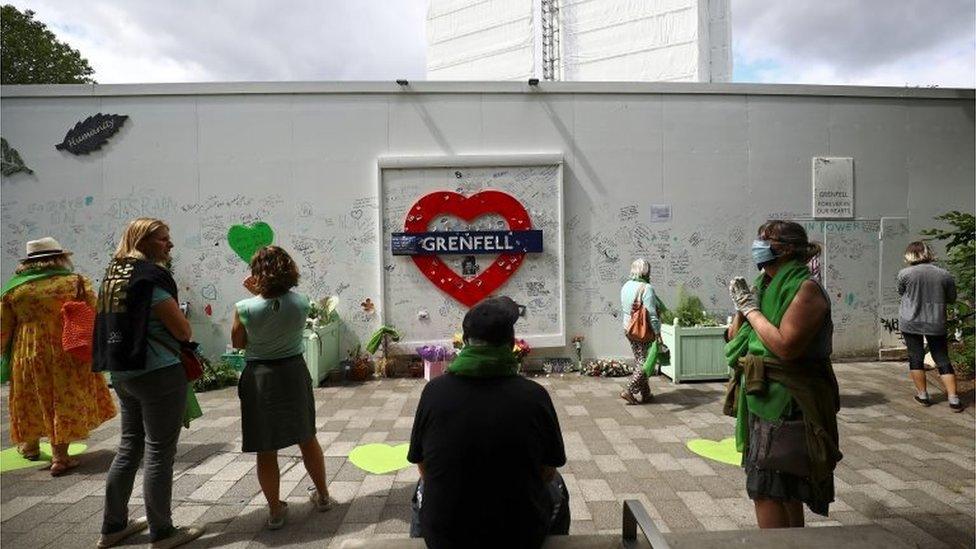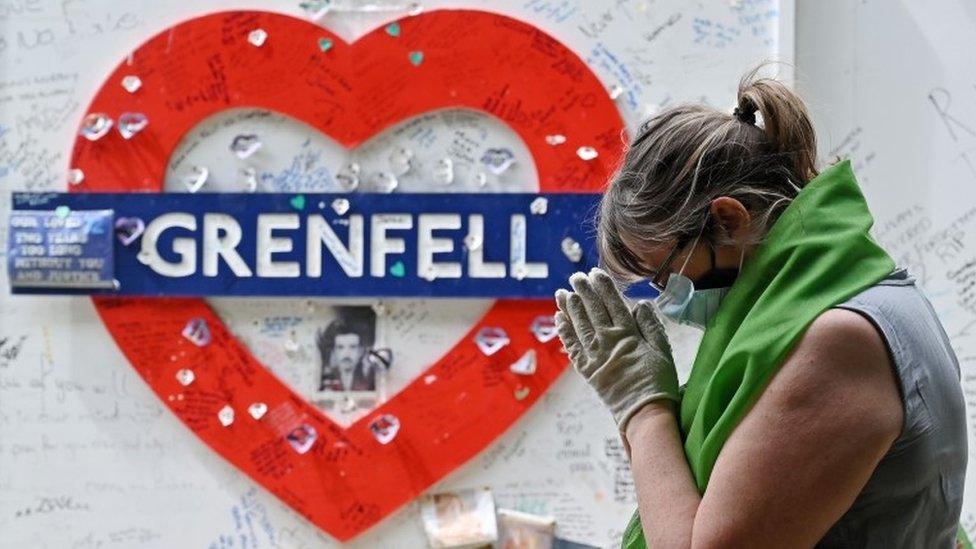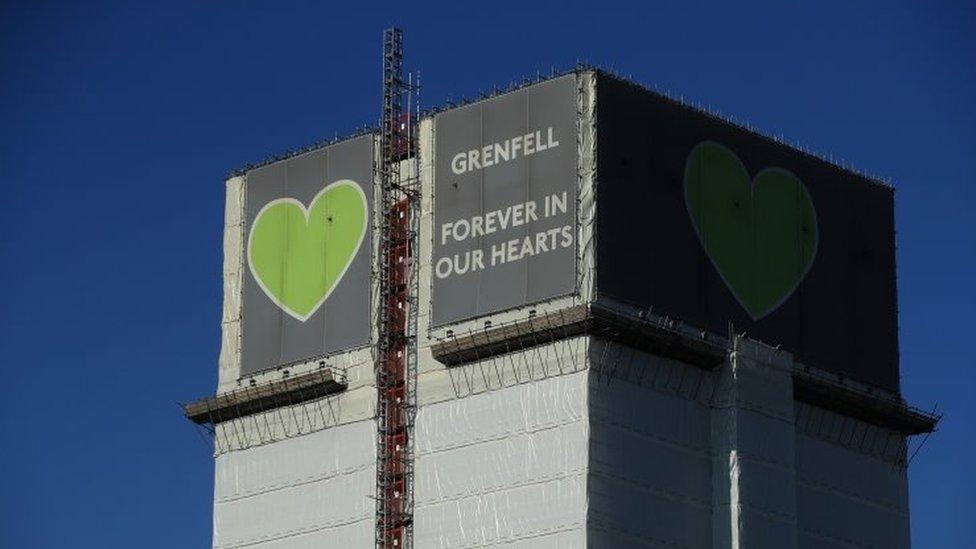Grenfell cladding company 'did not check safety' of design
- Published

The company which installed cladding blamed for fuelling the Grenfell Tower fire has told an inquiry into the blaze that it did not check the design met fire safety requirements.
Ray Bailey, director of Harley Facades, said the firm relied on architects and building control officers to make sure designs were safe.
He accused supplier Celotex of misleading his firm about its safety.
The fire safety consultation is due to close, external on 12 October.
The fire at the west London tower block killed 72 people in 2017.
A key question at this stage of the inquiry is how the companies involved allowed highly combustible cladding to be fitted to the outside of the 24-storey tower.
Mr Bailey said his firm was deceived that the insulation used on the project was safe for high-rises.
He said Polyisocyanurate (PIR) foam rigid insulation boards became widely used in construction around a decade ago.
Asked about how much he knew about their fire risk, he said: "When we were asked to use Celotex on Grenfell Tower, we were of the mindset that these new special super duper insulation products were acceptable providing they met certain criteria.
"Celotex made a big, big deal about their products being suitable, specifically designed for building over 18 metres.
"They used the term, which is very misleading now looking back, 'Class 0 throughout'."
A Class 0 fire safety certificate is the minimum requirement for external surfaces of buildings.
Mr Bailey said: "I think we carried out all possible reasonable checks... we didn't believe for one second that they would attempt to mislead us on this."
'Buck didn't stop' with company
Harley Facades managed the technical design and installation of cladding boxes that were added to frames on the building's exterior, to protect insulation panels from the rain.
However under questioning from Richard Millett QC, Ray Bailey said he did not believe the "buck stopped" with the company for the safety of the design.
He said "there is a raft of layers with Harley, with the architect, with the fire consultants, with building control to ensure that the... design is compliant."
Stephanie Barwise QC, a lawyer for a group of survivors and the bereaved, has previously accused Celotex of promoting its Rs5000 insulation despite senior executives knowing it should have been recalled after safety tests.
Craig Orr QC, representing Celotex, previously said its marketing literature promoted the use of Rs5000 on buildings taller than 18 metres only on a "rainscreen cladding system with the specific components" used when it passed a fire safety test, and that it stipulated any changes to those components would "need to be considered by the building designer".
"The rainscreen cladding system described in Celotex's marketing literature bore no resemblance to the rainscreen cladding system installed at Grenfell Tower," he added.
Celotex was marketed for use on tall buildings when used with a specific combination of other materials, despite being combustible.
The inquiry continues.
- Published8 September 2020

- Published14 June 2020

- Published10 June 2020
